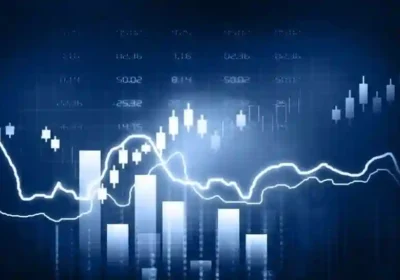Gain an Edge: How Forex Robots Can Transform Your Approach
In the dynamic world of forex trading, gaining an edge can make all the difference between success and failure. Traders are constantly seeking tools and strategies to enhance their performance and stay ahead of the curve. One such tool that has gained popularity in recent years is forex robot. These automated trading systems promise to revolutionize the way traders approach the market, offering the potential for increased efficiency, precision, and profitability. In this article, we’ll explore how forex robots can transform your trading approach and help you achieve your financial goals.
Understanding Forex Robots
Forex robots, also known as expert advisors (EAs), are software programs designed to automatically execute trades on behalf of traders. These algorithms are based on predefined trading rules and criteria, which are often derived from technical analysis, fundamental analysis, or a combination of both. By leveraging advanced mathematical algorithms and historical data, forex robots aim to identify trading opportunities and make decisions without human intervention.
Advantages of Using Forex Robots
- Emotion-Free Trading: One of the biggest advantages of using forex robots is their ability to eliminate emotions from the trading process. Emotions such as fear, greed, and hesitation can often cloud judgment and lead to irrational trading decisions. By relying on pre-programmed algorithms, forex robots execute trades based solely on logic and predetermined parameters, ensuring consistency and discipline.
- 24/7 Trading: Unlike human traders who need to sleep, eat, and take breaks, forex robots can operate around the clock, taking advantage of opportunities in different time zones and market conditions. This continuous monitoring allows traders to capitalize on fleeting opportunities and minimize the impact of overnight price movements.
- Backtesting and Optimization: Forex robots can be backtested using historical data to evaluate their performance under various market conditions. This allows traders to fine-tune their strategies and optimize parameters to maximize profitability. Additionally, advanced forex robots often incorporate machine learning techniques, enabling them to adapt and evolve in response to changing market dynamics.
- Speed and Efficiency: Manual trading can be time-consuming and labor-intensive, requiring traders to constantly monitor the markets and execute trades manually. Forex robots, on the other hand, can analyze vast amounts of data in milliseconds and execute trades instantaneously, reducing latency and slippage. This speed and efficiency can be especially beneficial in fast-moving markets where every second counts.
- Diversification: Forex robots can trade across multiple currency pairs simultaneously, spreading risk and diversifying trading opportunities. By incorporating a diverse range of strategies and assets, traders can reduce their exposure to individual market fluctuations and improve overall portfolio performance.
Challenges and Considerations
While forex robots offer numerous benefits, it’s important to acknowledge that they are not without their limitations and risks. Some of the key challenges and considerations include:
- Market Volatility: Forex markets can be highly volatile and unpredictable, presenting challenges for automated trading systems. Sudden price movements and unexpected events can trigger losses or cause forex robots to underperform, highlighting the importance of robust risk management and contingency plans.
- Over-Optimization: While backtesting and optimization are essential for refining trading strategies, there is a risk of overfitting the data to historical patterns. This can lead to overly complex strategies that perform well in backtests but fail to generalize to live trading conditions. Traders should exercise caution and avoid chasing unrealistic performance metrics.
- Technical Issues: Forex robots rely on stable internet connections and reliable trading platforms to operate effectively. Technical issues such as server outages, software glitches, or connectivity problems can disrupt automated trading activities and potentially lead to losses. Traders should regularly monitor their systems and have contingency plans in place to address technical issues promptly.
- Market Dynamics: While forex robots can analyze market data and identify trading opportunities, they may struggle to adapt to sudden changes in market dynamics or macroeconomic events. Human traders often possess intuition and insight that cannot be easily replicated by algorithms, allowing them to react swiftly to evolving situations and exercise discretion when necessary.
Conclusion
Forex robot have the potential to transform your trading approach by offering automation, efficiency, and precision. By eliminating emotions, enabling 24/7 trading, and facilitating backtesting and optimization, these automated systems can help traders gain an edge in the competitive forex market. However, it’s essential to recognize the challenges and risks associated with automated trading and to exercise caution when deploying forex robots. By combining the strengths of automation with human insight and judgment, traders can optimize their performance and achieve their financial goals in the dynamic world of forex trading.










